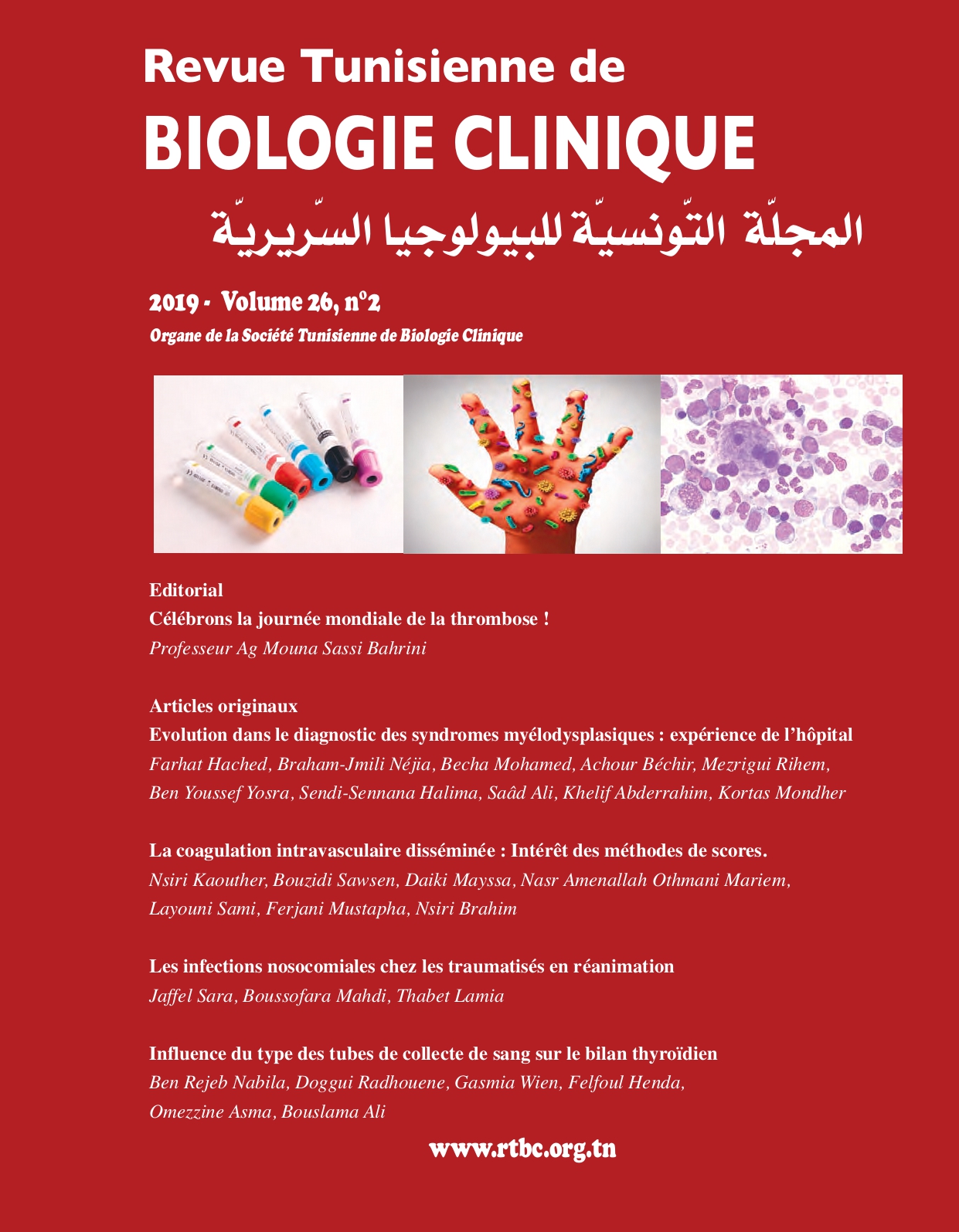Abstract
Introduction: The diagnosis of disseminated intravascular coagulation (DIC), a leading cause of death in intensive care units is challenging as there is no single routine laboratory test available that is sensitive and specific for DIC. The clinical suspicion of DIC must be supported by relevant laboratory tests. Scoring systems, as the International Society on Thrombosis and Haemostasis system (ISTH) have been proposed to reliably diagnose DIC. Objective: To evaluate the usefulness of the scoring system proposed by the International Society on Thrombosis and Haemostasis system (ISTH) in DIC diagnosis. Patients and methods: This review article summarizes three case reports of patients admitted to intensive care units (ICU) with a condition known to be associated with DIC (a prostate adenocarcinoma, septic shock and a retroplacental hematoma). Routinely available laboratory tests (platelet count, prothrombin time, fibrinogen and D-dimer levels) were measured at least once per 24 hours in every intensive care patient. An extensive series of coagulation tests, including soluble fibrin complexes detection; euglobulin lysis test; plasma levels of antithrombin, activated protein C and Factor V were also performed. Results: In the first studied case, the ISTH scoring system allowed initially to diagnose a non-overt DIC. Dynamic changes in coagulation factors and platelets counts during hospital stay indicate a change to overt DIC leading to multiple organ failure. In the second studied case, DIC diagnosis was clinically evident since admission. The severity of DIC according to this scoring system in these tow clinical cases was a prognostic factor predicting for mortality. In the third case, despite the hemorrhage during cesarean, laboratory tests were not initially with sufficient accuracy for the diagnosis of DIC. Repeating ISTH score during the surgery identify an overt DIC which has been well managed by transfusions and the outcome was favorable. Conclusion : The ISTH score constitute a useful and adequate tool in early diagnosis of DIC, mainly in non-overt DIC when clinical and laboratory abnormalities may be subtle.

This work is licensed under a Creative Commons Attribution 4.0 International License.
Copyright (c) 2019 Revue Tunisienne de BIOLOGIE CLINIQUE

